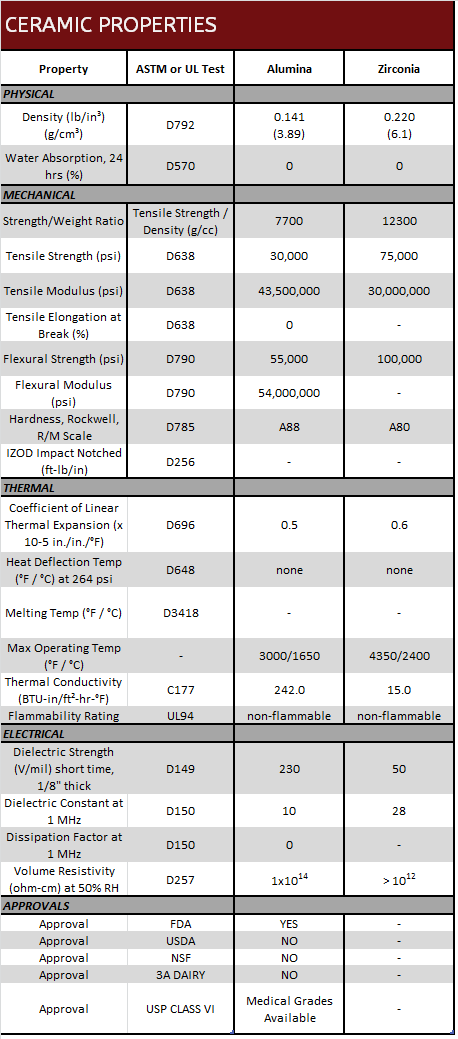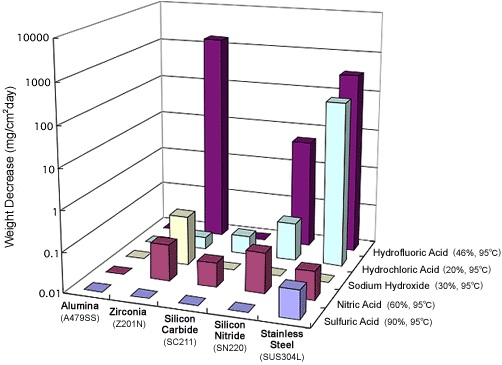A superb combination of corrosion resistance, temperature stability and non-conductivity
- Exceptional temperature resistance up to 3000°F (1650°C)

- Outstanding corrosion resistance to acids, solvents, salts, and organics
- Excellent electrical & thermal insulator
- High purity
- Ceramic Alumina flat head screw features and benefits
- Alumina ceramic datasheet
Alumina ceramic flat head screws are one of the most thermally resistant screws available. Due to their outstanding thermal resiustance, alumina ceramic screws are geared for the most demanding high temperature applications. Alumina ceramic flat head screws also have outstanding corrosion resistance and are highly chemically resistant to acids, solvents, and salts. Additionally, alumina ceramic screws find many uses in high voltage applications due to their non-conductive electrical properties.
Alumina ceramic screws are available in both metric and standard sizes. Please contact us if you have any questions about the properties or availability of our ceramic flat head screws.
Flat head screws made from customer specified ceramic grades or custom dimensions are available upon request.
Screw Types: Flat Head Screws, Hex Cap Screws, Pan Head Screws, Set Screws, Socket Head Cap Screws
Alumina Flat Head Screw Features and Benefits
Alumina flat head screws are characterized by having a head with a top flat surface (which can feature either a slotted, phillips or allen driver) and bottom that is cone shaped or countersunk. With this design, the head of the screw can align flush or below the surrounding surface having obvious benefits.
Alumina Slotted vs. Phillips Driver
| Slotted Head Advantages | Phillips Head Advantages |
|
|
Countersink Angle
For most flat head screw designs the angle of countersink is usually 82° for UNC and UNF applications however other angles ranging from 60° -120° could be specified.
| Thread Type | Normal Flat Head Countersink Angle |
UNC / UNF | 82° |
| Aerospace | 100° |
| ISO Metric / Imperial | 90° |
Common Ceramic Grades
Alumina 99.8%
Alumina ceramic or Aluminum oxide (Al203) is the most common grade of alumina ceramics and is designated as being 99.8% pure. Alumina is most known for high temperature stability and has a usable temperature limit of 3000°F (1650°C). Alumin has the greatest balance of economy, mechanical and thermal properties.
Various other compositions of alumina ceramic are available upon request.
Alumina and Zirconia Properties

Corrosion Resistance of Common Ceramics

